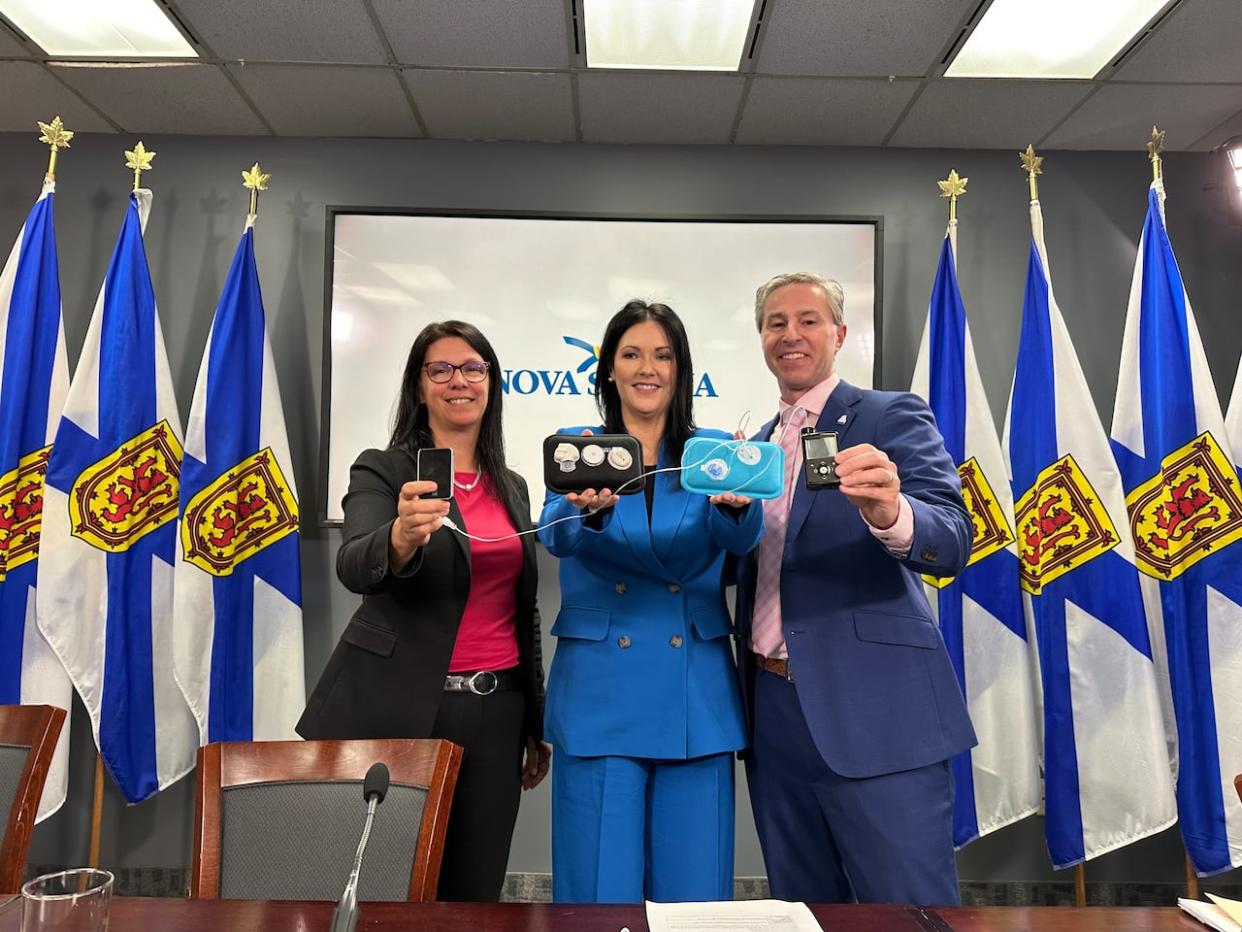Province to pay for continuous glucose monitors, lift age cap on insulin pumps

Responding to years of calls from advocates, Nova Scotia is expanding coverage for some equipment used by people with diabetes to track and treat their disease.
A day before his government's full budget is set to be tabled, Premier Tim Houston revealed one item that will be included: $7.2 million for continuous glucose monitors and insulin pumps.
The province already offers an income-based co-pay program for insulin pumps and related supplies, but only up to the age of 26. When the new program comes into effect, the age cap will be removed.
Provincial coverage for the monitors is new. As with insulin pumps, the amount covered by the province will be based on household income. There will be no deductible for people who make less than $60,000 annually, and deductibles will range from $500 to $1,000 for people who make between $60,000 and $150,000.
Insulin pumps cost about $6,300 and require about $4,000 per year in supplies. The monitors cost between $3,000 and $4,000 annually.
Ciara Stevens, a Type 1 diabetic and registered nurse who works as a diabetes educator at the Valley Regional Hospital, was moved by the announcement.
"It is honestly, probably the best thing I've heard in a long time," she said in an interview.
Cost is a common barrier
Stevens said she feels lucky that she's always been able to access insulin pumps and monitors for herself, thanks to private insurance.
"But I know a lot of people cannot afford that," she said. "I work with many pediatric patients, people living with Type 1, people living with Type 2, and I'm thinking of all the people that I work with that didn't have access to these things, and now will, and it makes me feel emotional."

Ciara Stevens is a registered nurse and diabetes educator. She also lives with Type 1 diabetes. (Brian MacKay/CBC)
Instead of manually testing blood through finger pricks, continuous glucose monitors test blood sugar levels every few minutes and send readings to devices such as cellphones or insulin pumps.
In turn, insulin pumps deliver insulin through a small plastic tube to manage blood sugar levels.
Used in tandem, the two devices can help people with diabetes track and treat the chronic disease with more accuracy and ease than with conventional methods.
The equipment also lightens the mental load of caring for someone with diabetes, Stevens said.
Lower deductible than many other provinces
Maria Campbell, director of government relations with Diabetes Canada, said Nova Scotia's new program will put it in the "top tier" of coverage compared to other provinces.
"The deductibles proposed in Nova Scotia are lower than in B.C., P.E.I., Manitoba, and in Ontario," said Campbell, adding that other provinces with coverage for diabetes equipment don't publicly disclose deductibles.
The expanded coverage comes after years of advocacy, she said, and "will not just improve lives, it will save lives in this province."
Campbell is now looking for more federal-provincial collaboration in developing a policy framework to prevent, treat and manage diabetes, she said.
The announcement in Nova Scotia comes just a few days after the federal NDP and Liberals reached an agreement on a pharmacare program that would include diabetes medication.
Houston said he will sign on to federal pharmacare if it is "a good deal for Nova Scotians." But he said he doesn't think Ottawa is "anywhere close" to enacting such a program, which is why he wanted to move forward with provincial coverage for diabetes care now.
MORE TOP STORIES


